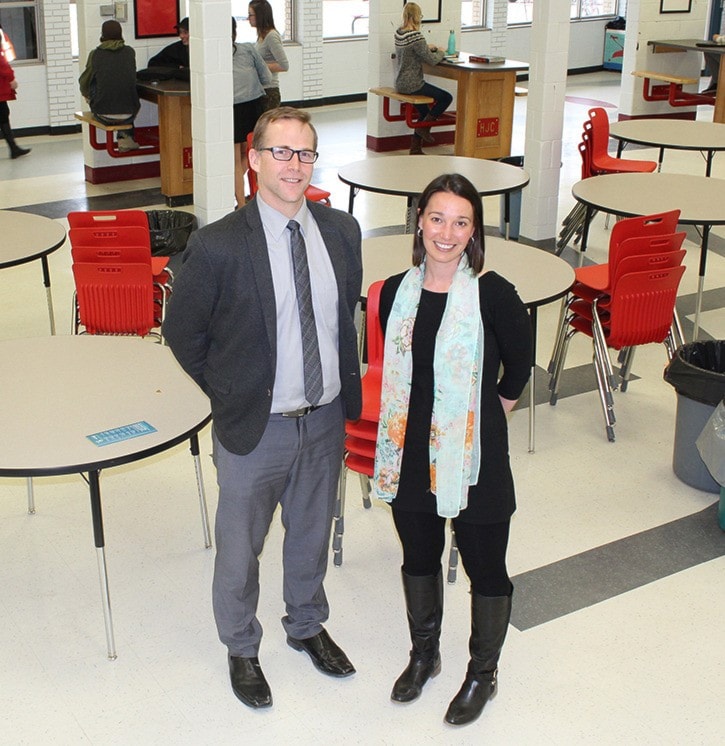Staff and admin at H.J. Cody School are working to take learning in a new direction for students, with efforts to update the way student success is gauged at the school. The school has recently been getting provincial recognition for it.
Principal Mike Garrow and Vice Principal Alex Lambert have been working to develop new ways to look at academic work and the strategies around it to help students at H.J. Cody reach academic success. The school has initiated a pilot project, in what is refered to as a “high school redesign,” said Lambert, while speaking with the Sylvan Lake News.
A significant part of the efforts of H.J. Cody School to implement change are related to student assessment practices - and how that is reflected in their marks.
“We’ve really worked with our students and staff, in letting them see assessment as a way to support growth, rather than something that is done to students, and strictly a grade that is reported in the end,” said Lambert.
She noted that school’s new, nuanced approach to leaning assessment seeks to encourage growth in students - something she and Garrow both agree they have been seeing.
With each course at H.J. Cody, there’s a curriculum assigned to it, Lambert noted, adding that “typically, what you see traditionally in a grade book is that they would open it, and it would say ‘quiz 1, test 1, assignment 1,’ et cetera. It would be a traditional approach.”
Lambert noted that teachers at H.J. Cody are moving away from that kind of traditional approach, adding that simple grades are not thorough enough to adequately gauge student success.
“If you get a test or assignment back, and it said 75 per cent, the 75 per cent isn’t super descriptive in terms of what you really did well, and where you need to improve,” said Lambert. “Where we are moving to, is where you have an assignment or test, and it’s not just a total of 75 per cent. It would be broken into a curricular outcome.”
Curricular outcomes are effective at demonstrating what specific areas of a course, test or assignment students are mastering - and in which parts they’re struggling. This serves as a way to determine where intervention and help are needed, Lambert noted, so teachers can support children in a more specific fashion.
“When data is broken down that way, it’s easier to make an informed decision on how to support those students, and what those students can do to better their understanding, as well,” said Lambert. “Students are seeing learning as a process, rather than just handing something in.”
With their nuanced form of assessment, Lambert noted that H.J. Cody’s teachers can more effectively track students’ risk of not passing courses - and are able to ensure they can be targeted and supported, when needed.
Their work has not gone unnoticed, either. Lambert and Garrow have gotten recognition for their innovation. They have had the opportunity to discuss their new assessment practices at educational conferences in Calgary, Edmonton, Lethbridge and Grande Prairie.
“We talked about our assessment practices, as well as large cultural changes we’ve done at H.J. Cody, and the many successes we’ve seen,” said Lambert. “We spoke to them on what the largest impacts on the teaching practice were, and were asked to do a webinar on that. We got a lot of positive feedback, not only from the people who organized, but the people who attended [the conferences].”
Lambert noted that their webinars serve as an opportune professional development tool, that can be broadcasted live, but also edited and put up on Alberta Education’s website.
“It can be used as a learning tool and guide, so that different staff or admin can use that, with staff, to guide their professional training,” said Lambert. “With us, it was specific to assessment and assessment changes.”
samuel.macdonald@sylvanlakenews.com
